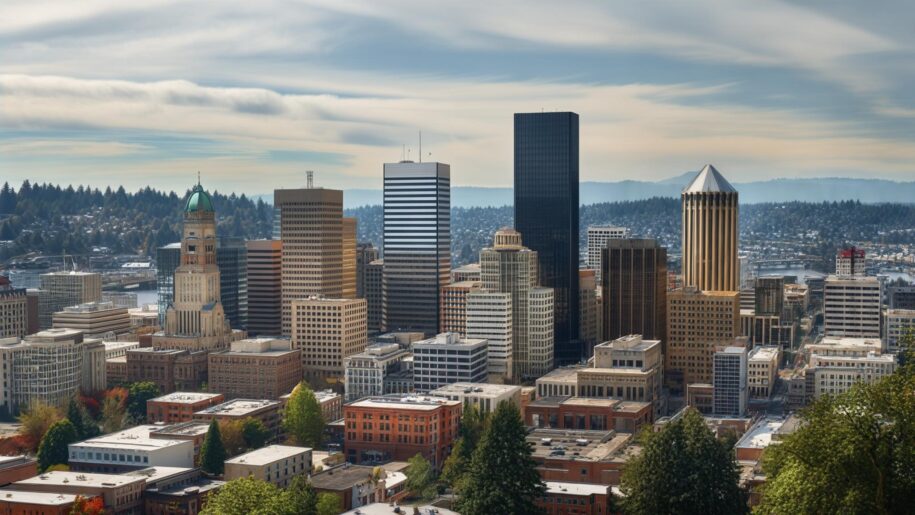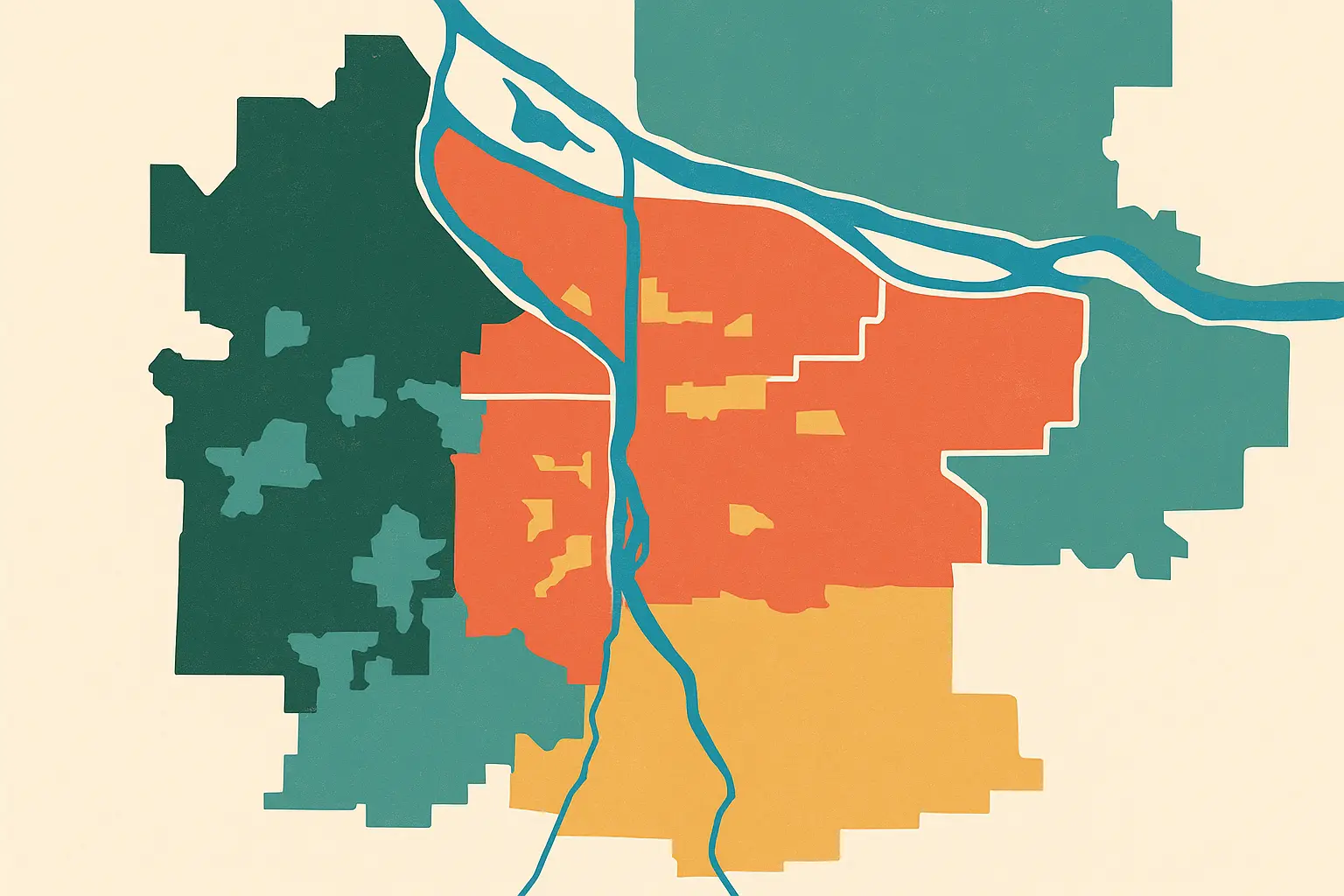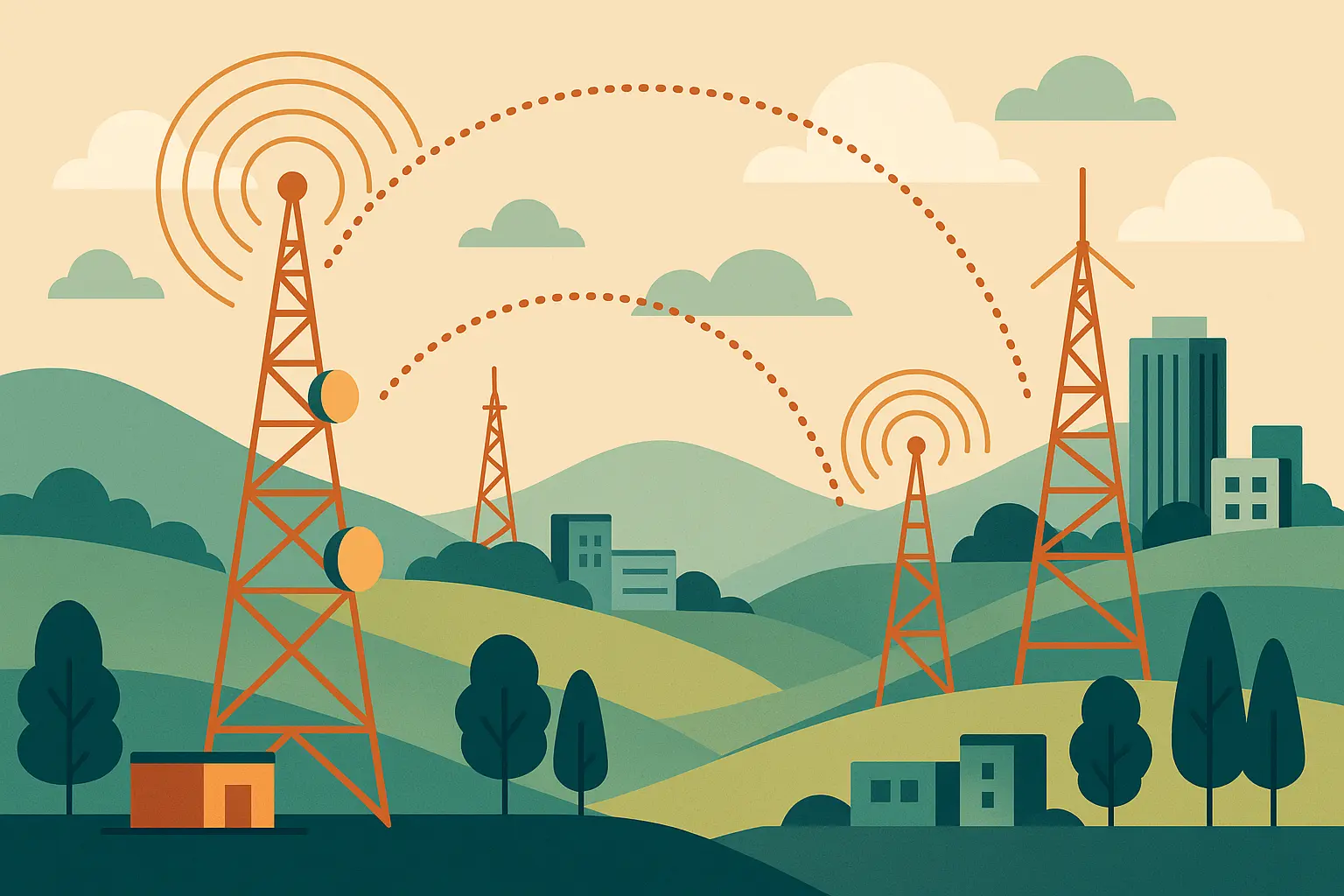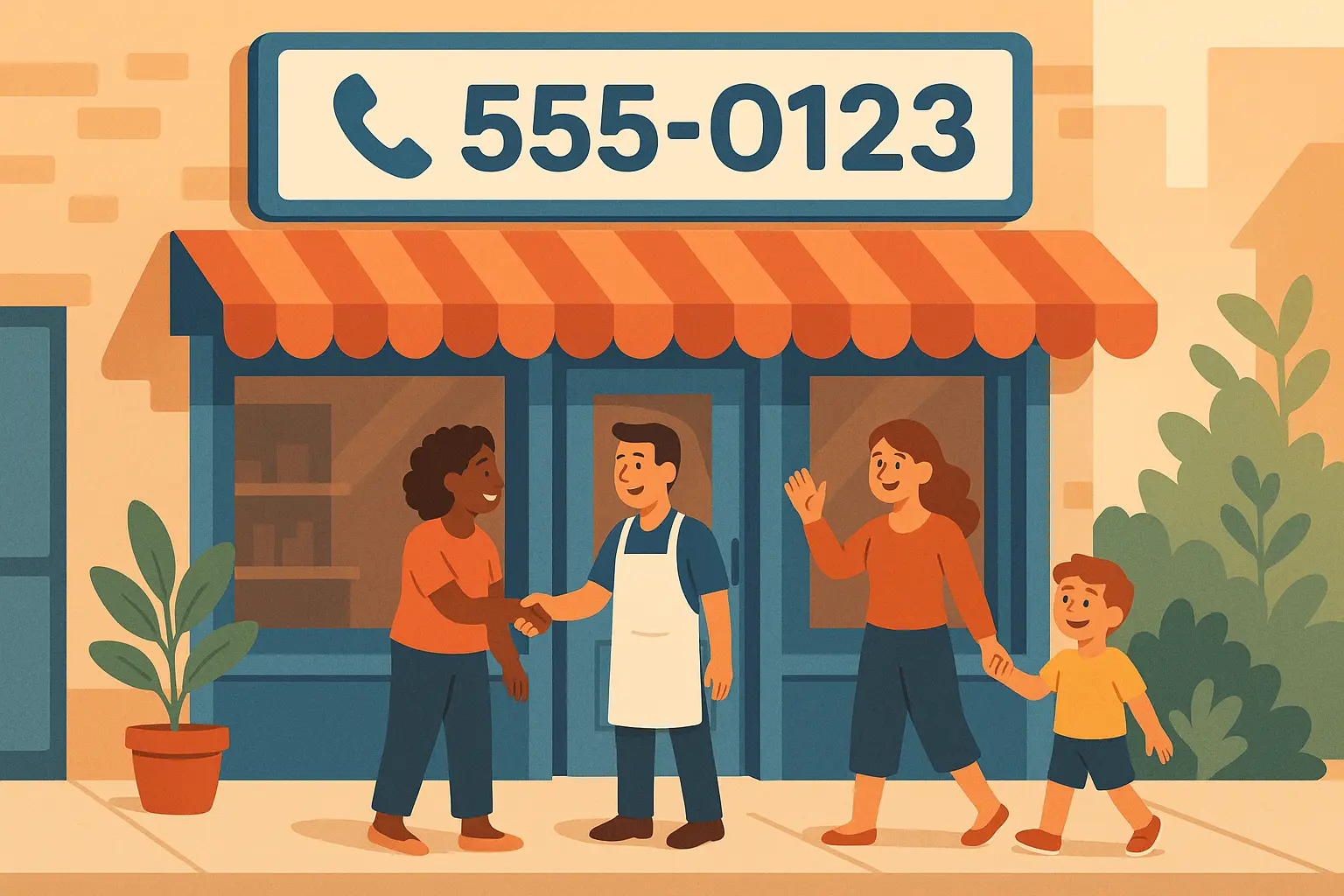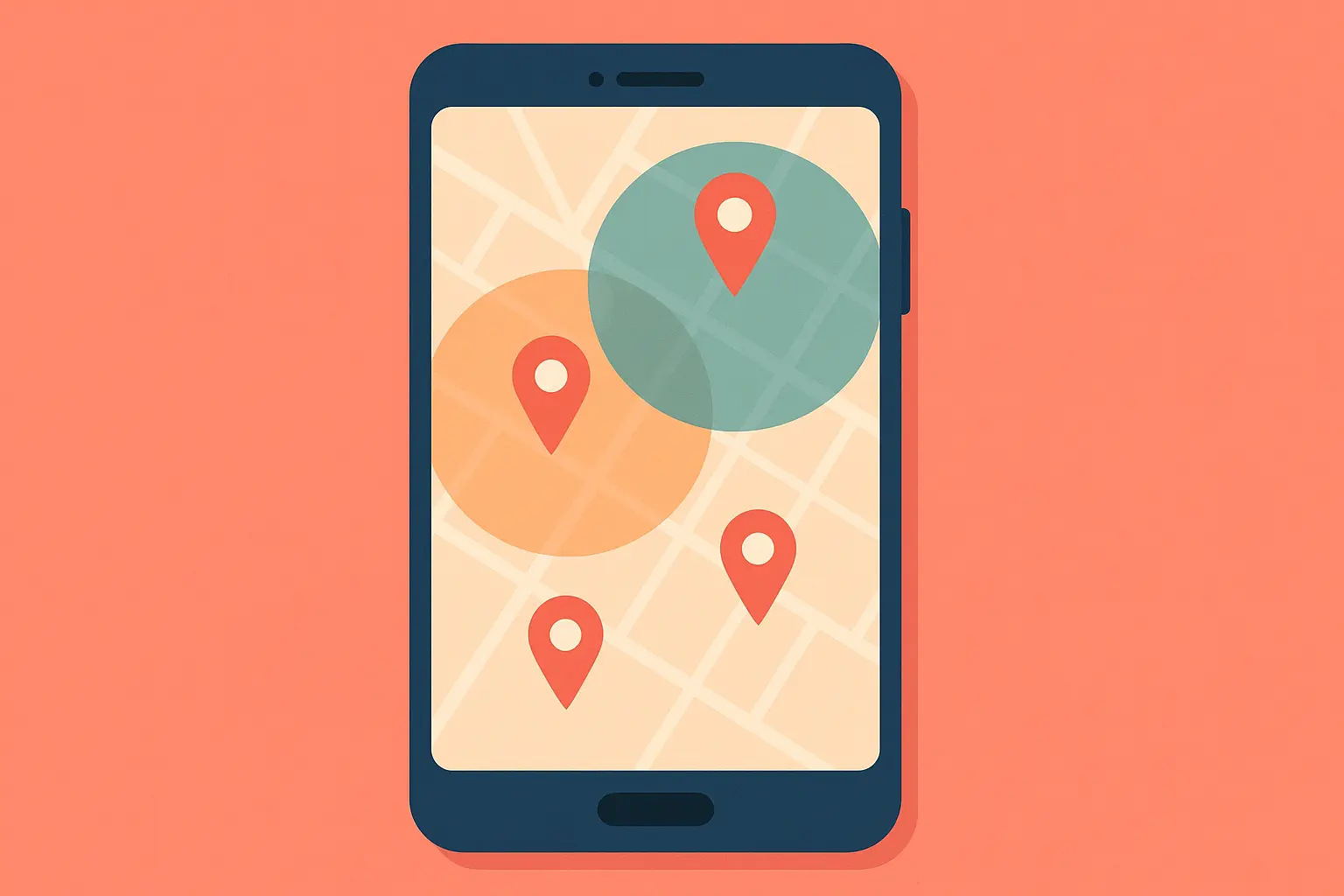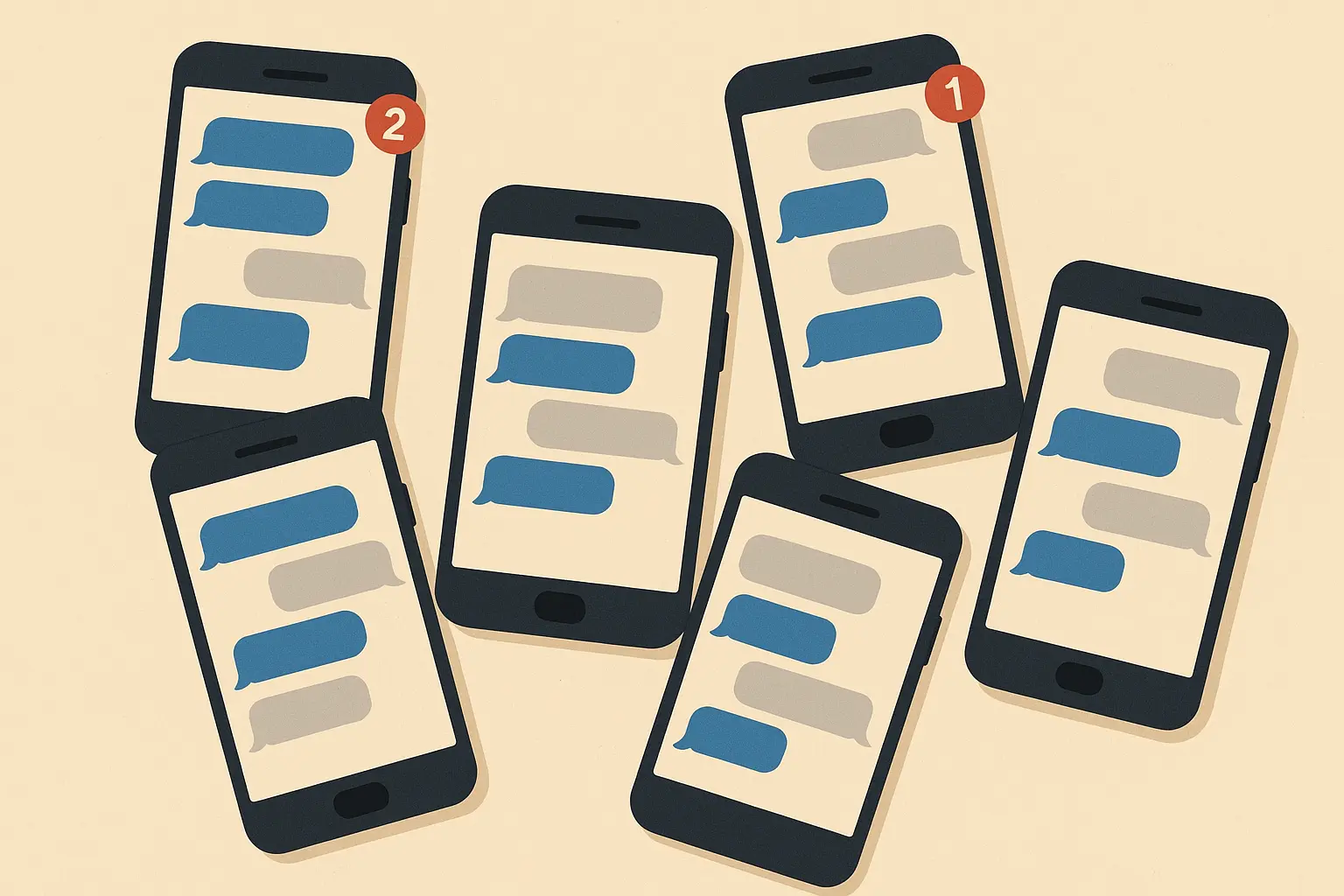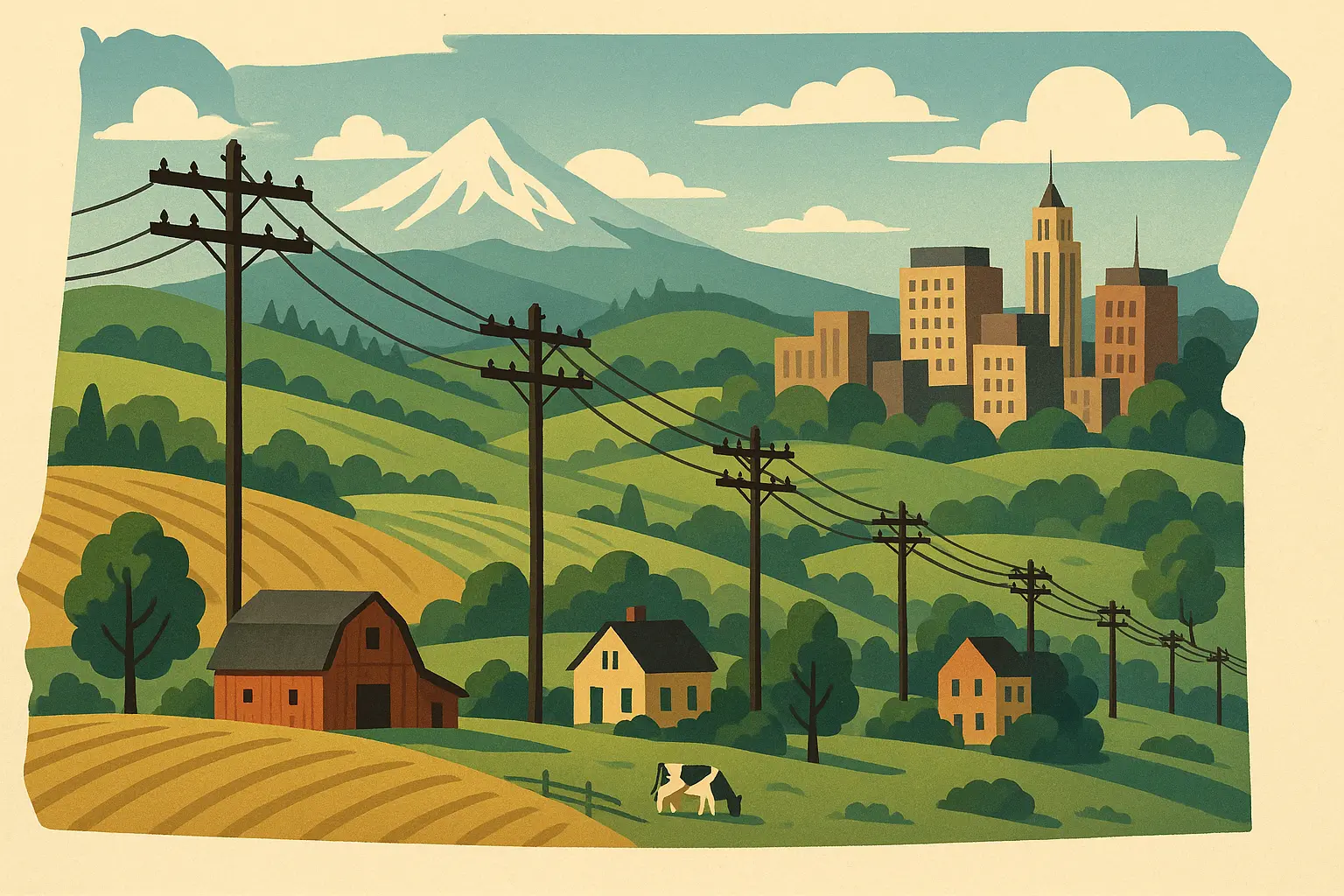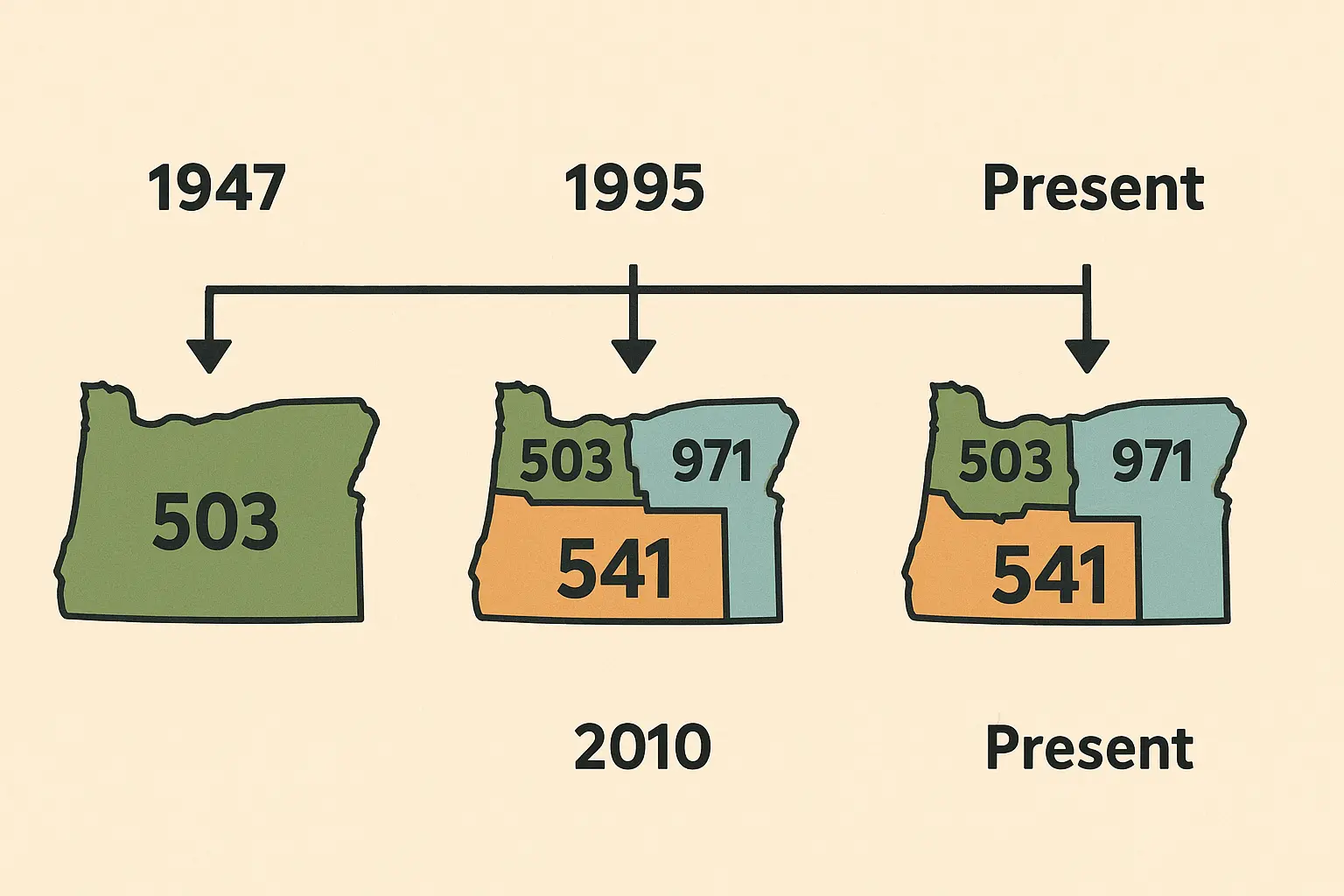Your 503 number is more valuable than you think. If you live or do business in Portland, these digits carry serious weight in Oregon’s competitive marketplace. The 503 area code serves over 2.1 million people across Oregon’s economic powerhouse, making it one of the most densely populated telecommunications regions in the Pacific Northwest. ZipAtlas Here’s what you need to know about Oregon’s most coveted area code.
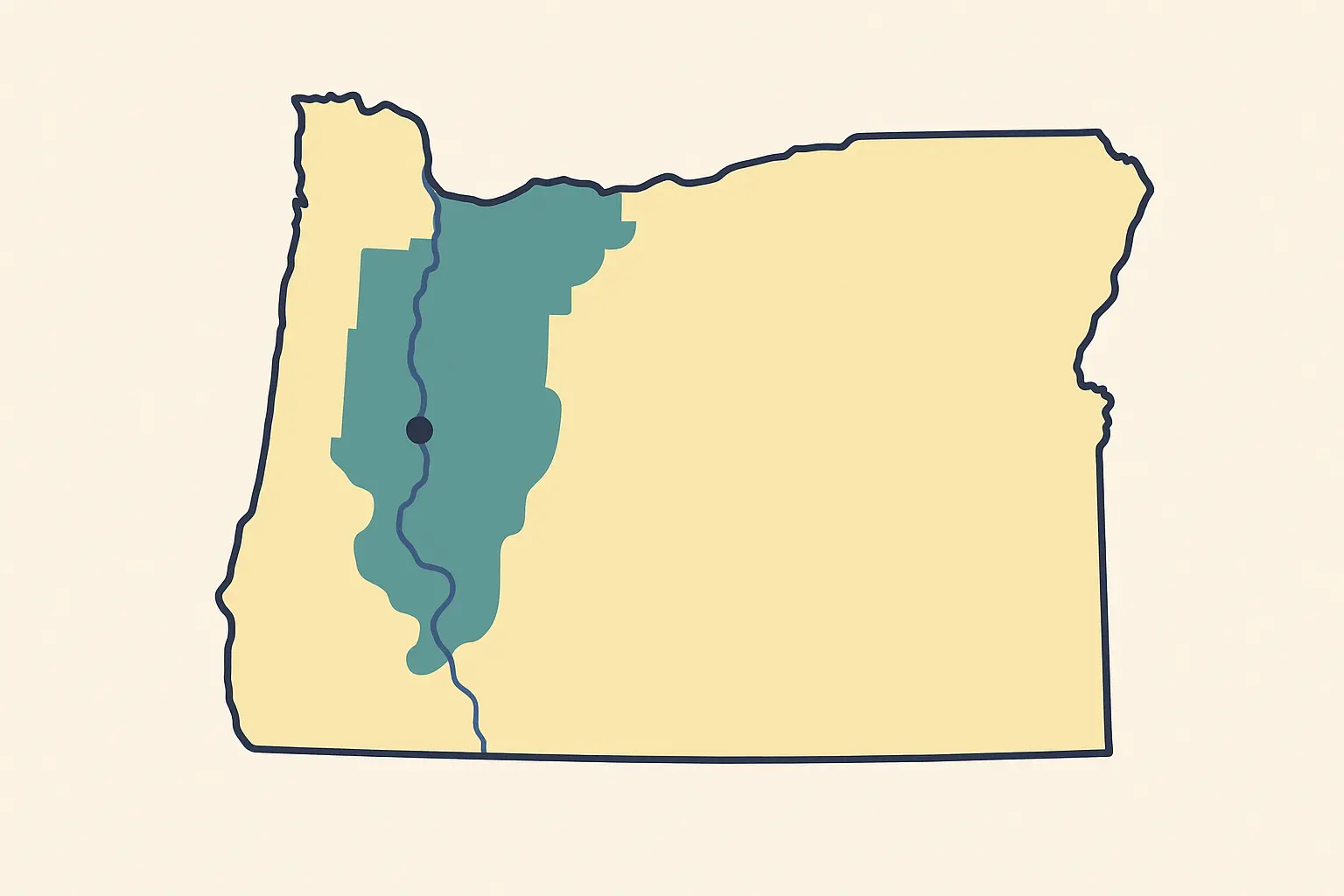
Table of Contents
Table of Contents
-
Understanding Where Your 503 Number Actually Works
-
Why Local Businesses Fight Over 503 Numbers
-
The Phone Company Game Behind Your Area Code
-
Text Message Chaos and How to Fix It
-
The Surprising History of Oregon’s Phone System
TL;DR
-
The 503 area code covers Portland and the Willamette Valley, but you’ll need to dial 10 digits thanks to the 971 overlay system
-
Having a 503 number gives businesses serious local credibility and SEO advantages in Oregon markets
-
Multiple carriers compete for your business in this region, each with different coverage patterns and pricing structures
-
SMS management becomes complicated with high-volume messaging, but forwarding solutions can streamline your workflow
-
This area code started as Oregon’s only number, then got carved up as Portland’s population exploded
-
Federal and state regulations control how these numbers get distributed and managed
Understanding Where Your 503 Number Actually Works
Your 503 number isn’t just random digits – it covers Oregon’s economic heart. We’re talking Portland metro and the Willamette Valley, from downtown business districts to rural farming communities. Here’s the catch: thanks to the 971 overlay, you’ll need to dial all 10 digits for every call.
The numbers tell the story – median household income here hits $84,208, jumping to $101,782 for folks aged 45-64. ZipAtlas Translation? This region has serious spending power and economic activity that drives demand for local phone numbers.
Portland Metro’s Phone Territory
The core 503 coverage sits right in Portland’s metro area – downtown where the deals happen, plus all those suburbs where people actually live. City limits don’t matter here; it’s about the entire economic ecosystem that makes Portland tick.
Downtown and Business District Coverage
Downtown Portland? Every major office building runs on 503 numbers. It’s the area code customers recognize and trust. Walk through any business district and you’ll see 503 numbers on storefronts, business cards, and billboards – it’s become the region’s calling card.
Suburban Extension Patterns
Coverage doesn’t stop at city limits – it reaches into Beaverton, Hillsboro, Gresham, and beyond. These suburban communities share the same 503 identity, creating a unified regional network that supports both personal and business needs.
|
County |
Major Cities |
Population Served |
|---|---|---|
|
Multnomah |
Portland, Gresham |
815,428 |
|
Washington |
Beaverton, Hillsboro |
695,572 |
|
Clackamas |
Oregon City, Lake Oswego |
421,401 |
|
Marion |
Salem, Keizer |
345,920 |
|
Yamhill |
McMinnville, Newberg |
107,722 |
Willamette Valley’s Communication Network
Head south from Portland and you’re still in 503 territory. Wine country, farming communities, small cities – they’re all connected through the same network. This coverage pattern reflects how interconnected Oregon’s diverse economy really is.
Agricultural Community Connections
The farming communities throughout the Willamette Valley rely on 503 numbers for everything from crop sales to equipment services. These rural areas might seem disconnected from Portland’s urban scene, but they’re all part of the same telecommunications network.
A McMinnville vineyard uses their 503 number for wine sales, connecting directly with Portland restaurants. That local area code builds instant trust with buyers who recognize it as authentic Oregon wine country.
The 971 Overlay Reality Check
Here’s where things get annoying – you can’t dial just seven digits anymore. Every call needs the full 10 digits, whether you’re calling next door or across town. The 971 overlay doubled available numbers but changed how everyone makes calls.
“Area code 971 service area was expanded on April 27, 2008 to overlay all of area code 503” That Oregon Life, making 10-digit dialing mandatory throughout the entire region.
10-Digit Dialing Requirements
Since 2008, 10-digit dialing became mandatory throughout the region. Had to retrain my fingers, update all my contacts, and reprogram speed dial. Worth it for the extra numbers, but still a pain. Understanding how to enter a phone number in international format becomes especially important when dealing with these expanded dialing requirements.
Quick Fix Checklist: 10-Digit Dialing
-
Update stored contacts with area codes
-
Reprogram speed dial with 10 digits
-
Fix business cards and marketing materials
-
Train staff on new procedures
Digital Mapping and Location Tools
Figuring out exactly where 503 coverage reaches has become much easier thanks to online mapping tools. These platforms help businesses understand service boundaries and make smart decisions about phone number selection.
Interactive maps show precise coverage boundaries – zoom in on neighborhoods or out to see the entire territory. Cross-referencing zip codes with area code coverage helps pinpoint exact service areas, which becomes crucial for businesses planning targeted marketing campaigns.
Why Local Businesses Fight Over 503 Numbers
Having a 503 number gives you serious advantages in Oregon’s market. Customers trust local area codes more than out-of-state numbers. It’s psychology – 503 says “we’re from here” without saying a word.
With over a million employed people in 503 territory (67% work for private companies), the business competition is fierce. ZipAtlas That local number can make the difference between landing a client and losing them to a competitor.
Local Credibility and Customer Trust
When customers see 503, they think local expertise and community commitment. This matters especially for services where local knowledge counts – real estate, contractors, restaurants, you name it. The psychological preference for local phone numbers translates into higher call conversion rates and stronger customer relationships.
Community Connection Advantages
Portland’s mayor even proclaimed May 3rd as “503 Day” in 2025, recognizing the area code’s cultural significance. City Cast Portland That’s how much this area code means to local identity.
Marketing Message Enhancement
Including a 503 number in your marketing instantly communicates “we know Oregon.” It’s shorthand for local expertise that works across advertising campaigns, brochures, and digital marketing efforts.
Local SEO Performance Boost
Search engines factor area codes into local rankings. Your 503 number helps you show up when people search for Oregon-specific services. It’s like having a local address for your phone – this SEO advantage can significantly improve visibility and help you compete more effectively online.
Virtual Phone Service Opportunities
Don’t have a Portland office? No problem. Virtual 503 numbers let you establish local presence from anywhere. Modern technology allows businesses to get 503 numbers without maintaining physical Oregon offices, opening new possibilities for market expansion.
Remote Business Operations
Companies operating from other states can use 503 virtual numbers to serve Oregon markets effectively. This provides local credibility without overhead costs – an attractive option for expanding businesses.
A Seattle consulting firm got a 503 virtual number for Portland clients – their response rates jumped 35% and helped them win contracts against Portland-based competitors.
Virtual 503 Setup Checklist
-
Research virtual number providers
-
Compare pricing and features
-
Set up call forwarding rules
-
Configure voicemail systems
-
Update marketing materials
The Phone Company Game Behind Your Area Code
Multiple carriers battle for your business in 503 territory. Each has different towers, coverage gaps, and pricing tricks. The number allocation system determines who gets which digits, plus you can keep your number when switching carriers.
Ever wonder why some 503 numbers work better in certain spots? It’s all about which company owns the infrastructure serving your location.
Carrier Competition in Oregon
You’ve got national giants and scrappy regional players competing in this market. The big companies offer wide coverage and fancy features. Regional carriers know local needs better and actually answer their phones when you call support.
Regional vs National Provider Options
Regional carriers in the Pacific Northwest often understand local needs better than national companies, offering specialized services and more responsive customer support. These smaller providers frequently offer competitive alternatives with enhanced local expertise, though their coverage areas might be more limited.
|
Provider Type |
Advantages |
Disadvantages |
|---|---|---|
|
National Carriers |
Wide coverage, advanced features |
Generic service, higher costs |
|
Regional Providers |
Local expertise, personalized support |
Limited coverage areas |
|
Virtual Services |
Flexibility, cost-effective |
Dependent on underlying networks |
How Phone Numbers Get Distributed
Those first three digits after 503? They’re called central office codes, and they get distributed among carriers based on demand forecasts. The system prevents shortages while keeping things fair among competing companies.
Central Office Code Management
This distribution system ensures each carrier has adequate number inventory while preventing waste. It’s a carefully managed process that balances current demand with future growth projections.
Number Portability Benefits
Best part? Number portability. Keep your 503 number when switching carriers. A Portland startup I know launched with a small carrier, then ported to a major provider as they grew. Same trusted local number throughout the transition – no hassle updating contact information or losing customer recognition.
Text Message Chaos and How to Fix It
SMS through 503 numbers can get messy fast, especially for businesses. Message delivery varies by carrier, network congestion happens during peak hours, and managing high volumes becomes a nightmare without proper systems.
High-Volume SMS Management Challenges
With 61% of the 503 population in the workforce, business hours bring massive text volumes. ZipAtlas Different carriers route messages differently, causing delays and delivery headaches that can hurt customer relationships.
For businesses experiencing overwhelming text volumes, learning how to forward text messages to an email address can provide immediate relief and better organization.
Delivery Reliability Concerns
SMS delivery in the 503 region can experience delays during peak usage periods. Understanding these patterns helps businesses plan their communication timing and set appropriate customer expectations for response times.
Professional SMS Solutions for 503 Numbers
Smart businesses use forwarding systems to manage SMS chaos. The right setup can transform how teams handle text messages, ensuring nothing falls through the cracks while maintaining professional response standards.
Teams managing multiple communication channels can benefit from how to forward text messages to a Slack channel to centralize their messaging workflows.
Email Integration Benefits
Auto Forward SMS provides seamless integration between 503 phone numbers and email systems, ensuring important text messages reach the right team members regardless of their location or device availability. This integration is particularly valuable for Oregon-based businesses managing customer communications across multiple channels.
Advanced Message Filtering
With Auto Forward SMS’s keyword filtering and rule-based forwarding, businesses with 503 numbers can automatically categorize and route messages based on content, sender, or urgency level. This automation streamlines communication workflows and dramatically improves response times.
Business Continuity Protection
Auto Forward SMS addresses the critical need for message backup and archival, ensuring businesses using 503 numbers never lose important customer communications due to device failures, network issues, or staff transitions. This protection maintains professional communication standards essential for success in Oregon’s competitive business environment.
For Android users managing critical business communications, understanding how to prevent my app from going to sleep ensures continuous message forwarding reliability.
The Surprising History of Oregon’s Phone System
Originally, 503 covered all of Oregon – from Portland to the eastern desert. As the population exploded (especially around Portland), regulators had to get creative with geographic splits and new area code assignments.
From Statewide to Regional Coverage
The original 503 area code covered Oregon’s entire state, creating a single telecommunications identity that connected urban Portland with rural eastern Oregon communities. This statewide coverage worked well when Oregon’s population was smaller and phone number demand was manageable.
Original Statewide Service Period
During its early years, 503 served as Oregon’s only area code, handling everything from Portland’s growing business district to remote farming communities in eastern Oregon. This unified system created a strong state identity around the 503 number.
Population Growth Pressures
As Oregon’s population grew, especially around Portland, the demand for new phone numbers began straining the available supply. This growth pressure eventually forced telecommunications regulators to consider geographic splits and new area code assignments.
The Timeline
Here’s how Oregon’s phone system evolved:
-
1947: 503 becomes Oregon’s only area code
-
1995: Eastern Oregon gets 541 (they wanted their own identity)
-
2000: 971 overlays 503 in northwest Oregon
-
2008: 971 expands to cover all 503 territory
-
2010: 458 overlays 541 (central/western Oregon)
Regulatory Framework and Compliance
Federal and state regulators manage the whole system. The FCC sets national rules for area code implementation, number portability requirements, and carrier responsibilities. Oregon’s Public Utilities Commission handles local issues, consumer complaints, and ensures compliance with state-specific telecommunications regulations.
Federal Communications Commission Oversight
The FCC establishes fundamental rules that directly impact how 503 numbers operate. These federal guidelines ensure consistency across state lines while protecting consumer interests through standardized policies.
State-Level Regulatory Management
Oregon’s Public Utilities Commission provides local oversight, monitoring service quality and ensuring fair practices. This dual-level regulatory approach balances national standards with regional needs and local consumer protection.
Similar regulatory patterns exist across the Pacific Northwest, as seen in neighboring 360 area code coverage which serves Washington state’s western regions.
Bottom Line
Your 503 number is more than digits – it’s a business asset and regional badge of honor. From its humble beginnings as Oregon’s only area code to its current role as Portland’s business calling card, the 503 has adapted to serve one of the fastest-growing regions in the Pacific Northwest.
Whether you’re running a business that depends on local credibility or just trying to manage your text messages more effectively, understanding how the 503 system works saves time, money, and frustration. The telecommunications landscape will continue evolving, but the fundamental value of local presence and reliable communication never goes out of style.
The 503 area code represents much more than just a set of digits – it’s become a symbol of Oregon’s economic identity and regional pride. With over 2.1 million people relying on this telecommunications network, from downtown Portland’s business districts to the Willamette Valley’s farming communities, the 503 has proven its staying power.
For businesses struggling with SMS management on their 503 numbers, professional forwarding solutions can transform chaotic text message workflows into streamlined communication systems. Don’t let disorganized messaging hold your business back – make your 503 number work for you, not against you.
The competition for 503 numbers will only intensify as Oregon’s economy continues growing. Whether you’re a established business protecting your local identity or a newcomer trying to break into the market, understanding these telecommunications secrets gives you a real advantage in Oregon’s competitive landscape.
